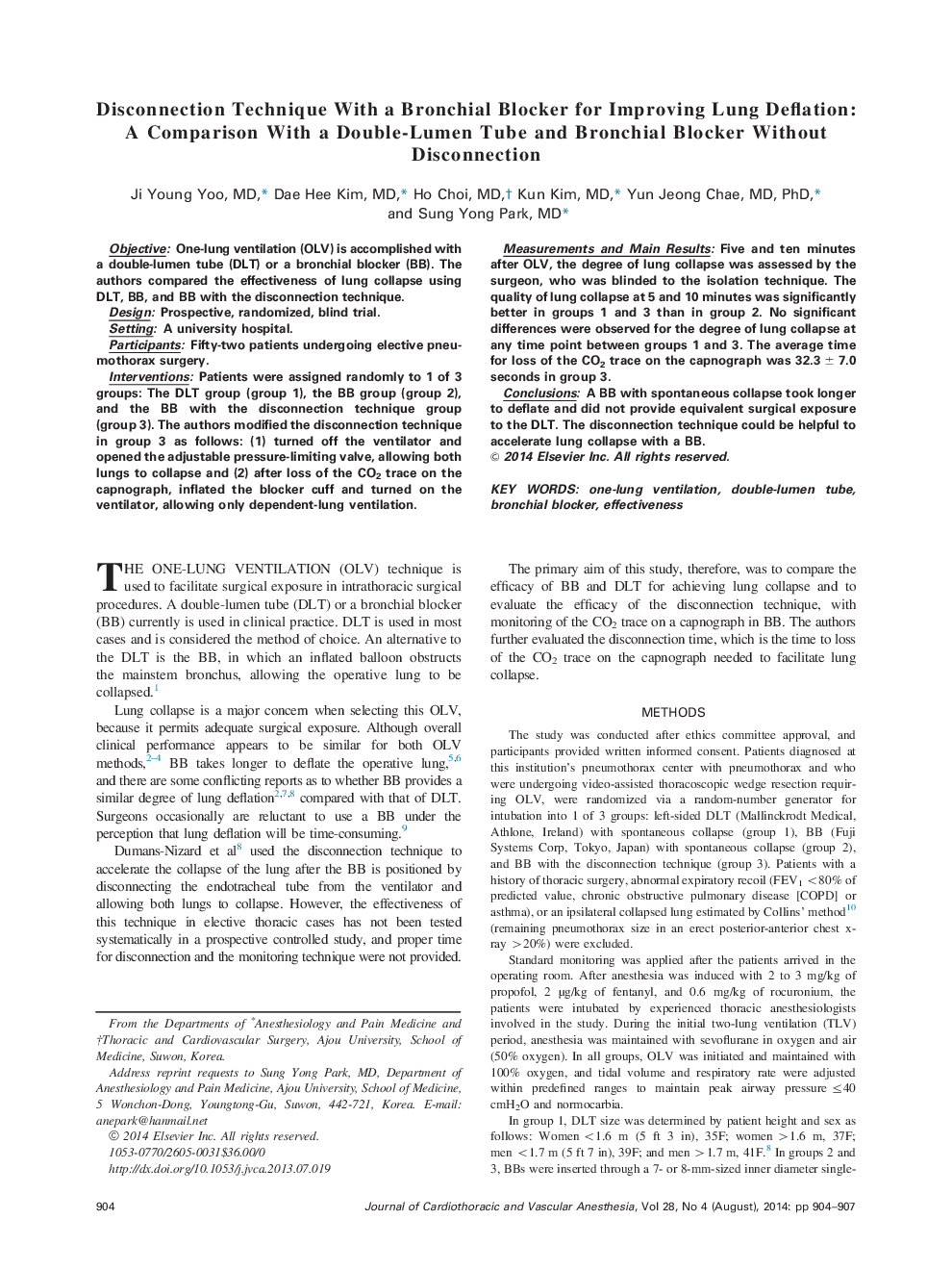| Article ID | Journal | Published Year | Pages | File Type |
|---|---|---|---|---|
| 2759409 | Journal of Cardiothoracic and Vascular Anesthesia | 2014 | 4 Pages |
ObjectiveOne-lung ventilation (OLV) is accomplished with a double-lumen tube (DLT) or a bronchial blocker (BB). The authors compared the effectiveness of lung collapse using DLT, BB, and BB with the disconnection technique.DesignProspective, randomized, blind trial.SettingA university hospital.ParticipantsFifty-two patients undergoing elective pneumothorax surgery.InterventionsPatients were assigned randomly to 1 of 3 groups: The DLT group (group 1), the BB group (group 2), and the BB with the disconnection technique group (group 3). The authors modified the disconnection technique in group 3 as follows: (1) turned off the ventilator and opened the adjustable pressure-limiting valve, allowing both lungs to collapse and (2) after loss of the CO2 trace on the capnograph, inflated the blocker cuff and turned on the ventilator, allowing only dependent-lung ventilation.Measurements and Main ResultsFive and ten minutes after OLV, the degree of lung collapse was assessed by the surgeon, who was blinded to the isolation technique. The quality of lung collapse at 5 and 10 minutes was significantly better in groups 1 and 3 than in group 2. No significant differences were observed for the degree of lung collapse at any time point between groups 1 and 3. The average time for loss of the CO2 trace on the capnograph was 32.3±7.0 seconds in group 3.ConclusionsA BB with spontaneous collapse took longer to deflate and did not provide equivalent surgical exposure to the DLT. The disconnection technique could be helpful to accelerate lung collapse with a BB.
